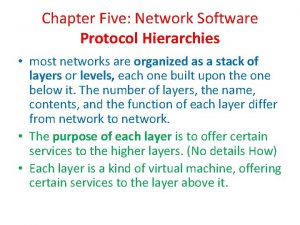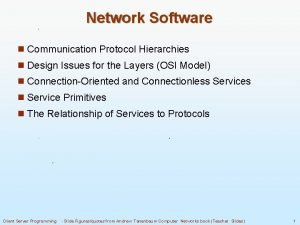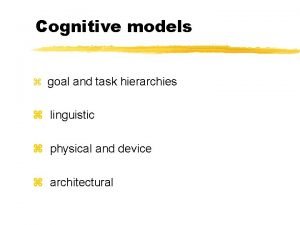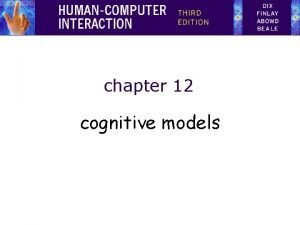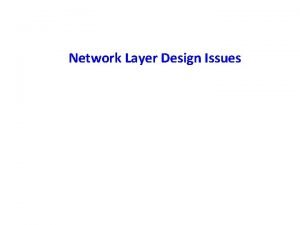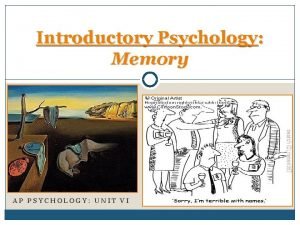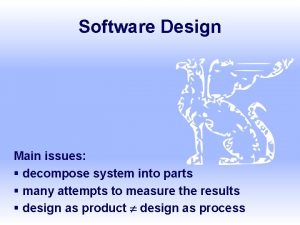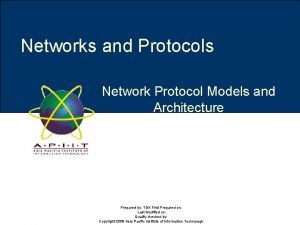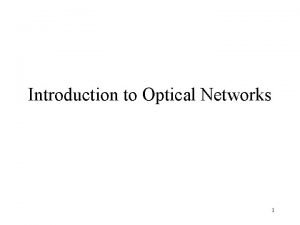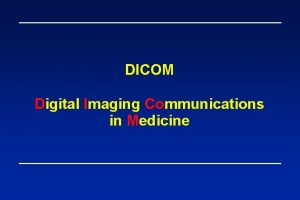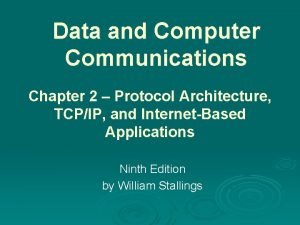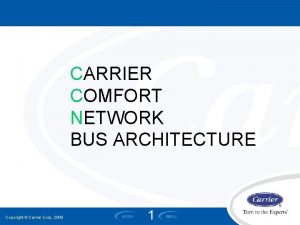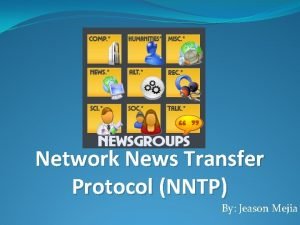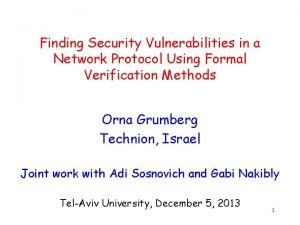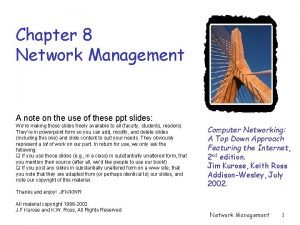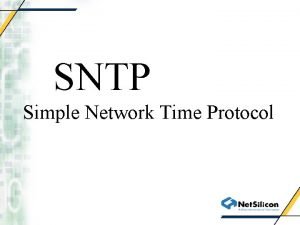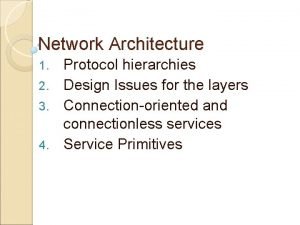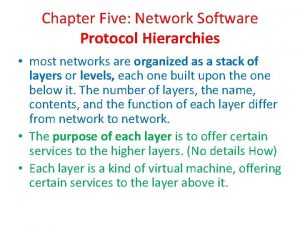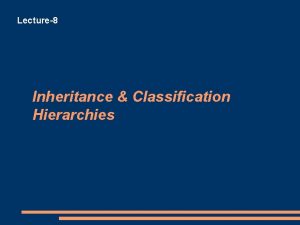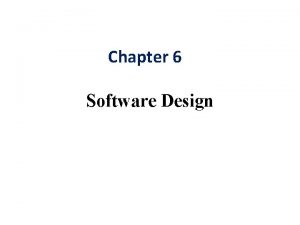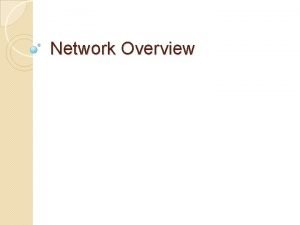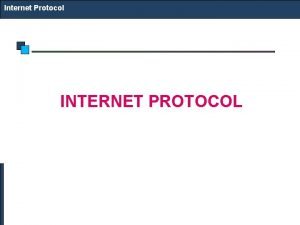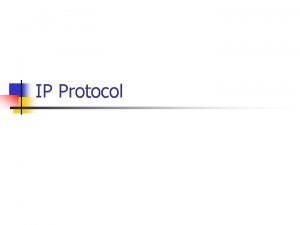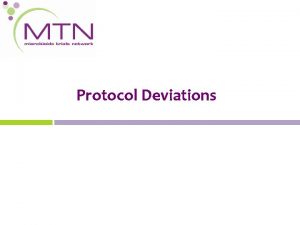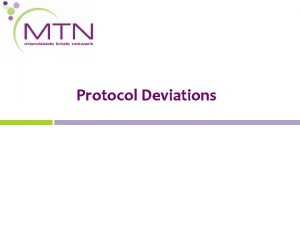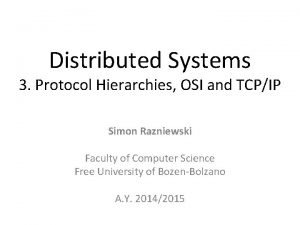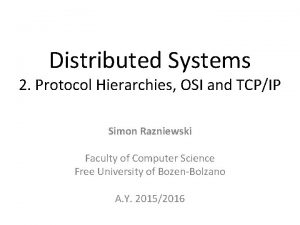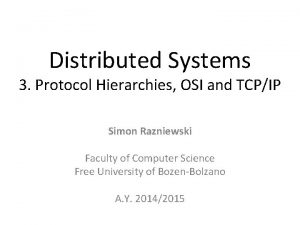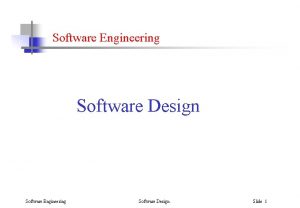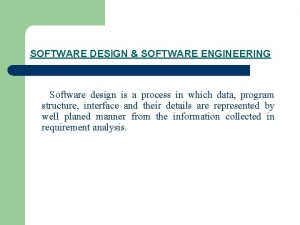Network Software Protocol Hierarchies Design Issues for the



































- Slides: 35

Network Software • • • Protocol Hierarchies Design Issues for the Layers Connection-Oriented and Connectionless Service Primitives The Relationship of Services to Protocols

Network Software Protocol Hierarchies Layers, protocols, and interfaces.

Protocol Hierarchies (2) The philosopher-translator-secretary architecture.

Protocol Hierarchies (3) Example information flow supporting virtual communication in layer 5.

Design Issues for the Layers • • • Addressing Error Control Flow Control Multiplexing Routing

Connection-Oriented and Connectionless Services Six different types of service.

Service Primitives Five service primitives for implementing a simple connectionoriented service.

Reference Models • • • The OSI Reference Model The TCP/IP Reference Model A Comparison of OSI and TCP/IP A Critique of the OSI Model and Protocols A Critique of the TCP/IP Reference Model

Reference Models The OSI reference model.

Why was it created? • • • The principles that were applied to arrive at the seven layers are as follows: A layer should be created where a different level of abstraction is needed. Each layer should perform a well defined function. The function of each layer should be chosen in accordance with developing internationally standardized protocols. The layer boundaries should be chosen to minimize the information flow across the interfaces. The number of layers should be large enough that distinct functions need not be thrown together in the same layer out of necessity, and small enough that the architecture does not become unwieldy.

Reference Models (2) The TCP/IP reference model.

Reference Models (3) Protocols and networks in the TCP/IP model initially.

Comparing OSI and TCP/IP Models Concepts central to the OSI model • Services • Interfaces • Protocols

A Critique of the OSI Model and Protocols Why OSI did not take over the world • Bad timing • Bad technology • Bad implementations • Bad politics

Bad Timing The apocalypse of the two elephants.

A Critique of the TCP/IP Reference Model Problems: • Service, interface, and protocol not distinguished • Not a general model • Host-to-network “layer” not really a layer • No mention of physical and data link layers • Minor protocols deeply entrenched, hard to replace

Hybrid Model The hybrid reference model to be used in this book.

Example Networks • The Internet • Connection-Oriented Networks: X. 25, Frame Relay, and ATM • Ethernet • Wireless LANs: 802: 11

The ARPANET(Advanced Research Project Agency Net) (a) Structure of the telephone system. (b) Baran’s proposed distributed switching system.

The ARPANET (2) The original ARPANET design.

The ARPANET (3) Growth of the ARPANET (a) December 1969. (b) July 1970. (c) March 1971. (d) April 1972. (e) September 1972.

NSFNET The NSFNET backbone in 1988.

Internet Usage Traditional applications (1970 – 1990) • E-mail • News • Remote login • File transfer

Architecture of the Internet Overview of the Internet.

ATM Virtual Circuits A virtual circuit.

ATM Virtual Circuits (2) An ATM cell.

The ATM Reference Model The ATM reference model.

The ATM Reference Model (2) The ATM layers and sublayers and their functions.

Ethernet Architecture of the original Ethernet.

Wireless LANs (a) Wireless networking with a base station. (b) Ad hoc networking.

Wireless LANs (2) The range of a single radio may not cover the entire system.

Wireless LANs (3) A multicell 802. 11 network.

Network Standardization • • • Who’s Who in the Telecommunications World Who’s Who in the International Standards World Who’s Who in the Internet Standards World

ITU(International Telecommunication Union) • Main sectors • • Radiocommunications(allocating Radio Frequencies) : ITU-R Telecommunications Standardization(telephone and data communication systems) : ITU-T Development: ITU-D Classes of Members • • National governments(members of United Nations) Sector members(Telecom, Computer, Media) Associate members(Smaller Oragnizations interested in a particular Study Group) Regulatory agencies(Controlling authorities)

IEEE 802 Standards The 802 working groups. The important ones are marked with *. The ones marked with are hibernating. The one marked with † gave up.
 Network software protocol hierarchies
Network software protocol hierarchies Protocol hierarchies
Protocol hierarchies Goal and task hierarchy model
Goal and task hierarchy model Issues for goal hierarchies
Issues for goal hierarchies Design issues of network layer
Design issues of network layer Implementation of connectionless service
Implementation of connectionless service Network design issues
Network design issues Design issues of network layer
Design issues of network layer Rich feature hierarchies
Rich feature hierarchies Priming memory
Priming memory Misguided little unforgivable hierarchies
Misguided little unforgivable hierarchies Design issues in software engineering
Design issues in software engineering Network systems design using network processors
Network systems design using network processors Real time software design in software engineering
Real time software design in software engineering Software design fundamentals in software engineering
Software design fundamentals in software engineering Network protocol architecture
Network protocol architecture Telecommunication network architecture
Telecommunication network architecture Dicom network protocol
Dicom network protocol Network protocol architecture
Network protocol architecture Carrier comfort network
Carrier comfort network Usenet message vanessa
Usenet message vanessa Network protocol vulnerabilities
Network protocol vulnerabilities Simple network management protocol ppt
Simple network management protocol ppt Simple network time protocol
Simple network time protocol Iso 22301 utbildning
Iso 22301 utbildning Novell typiska drag
Novell typiska drag Nationell inriktning för artificiell intelligens
Nationell inriktning för artificiell intelligens Ekologiskt fotavtryck
Ekologiskt fotavtryck Varför kallas perioden 1918-1939 för mellankrigstiden?
Varför kallas perioden 1918-1939 för mellankrigstiden? En lathund för arbete med kontinuitetshantering
En lathund för arbete med kontinuitetshantering Underlag för särskild löneskatt på pensionskostnader
Underlag för särskild löneskatt på pensionskostnader Personlig tidbok
Personlig tidbok A gastrica
A gastrica Densitet vatten
Densitet vatten Datorkunskap för nybörjare
Datorkunskap för nybörjare Tack för att ni lyssnade bild
Tack för att ni lyssnade bild
